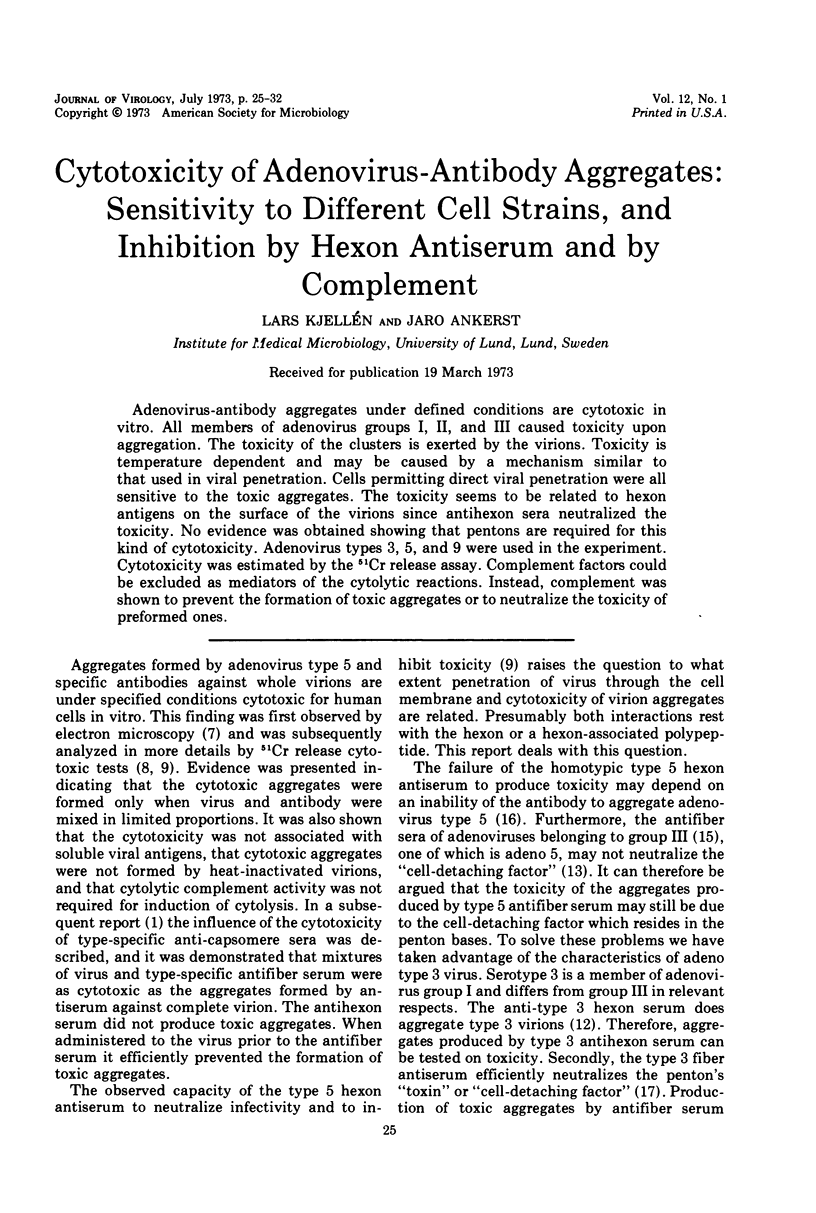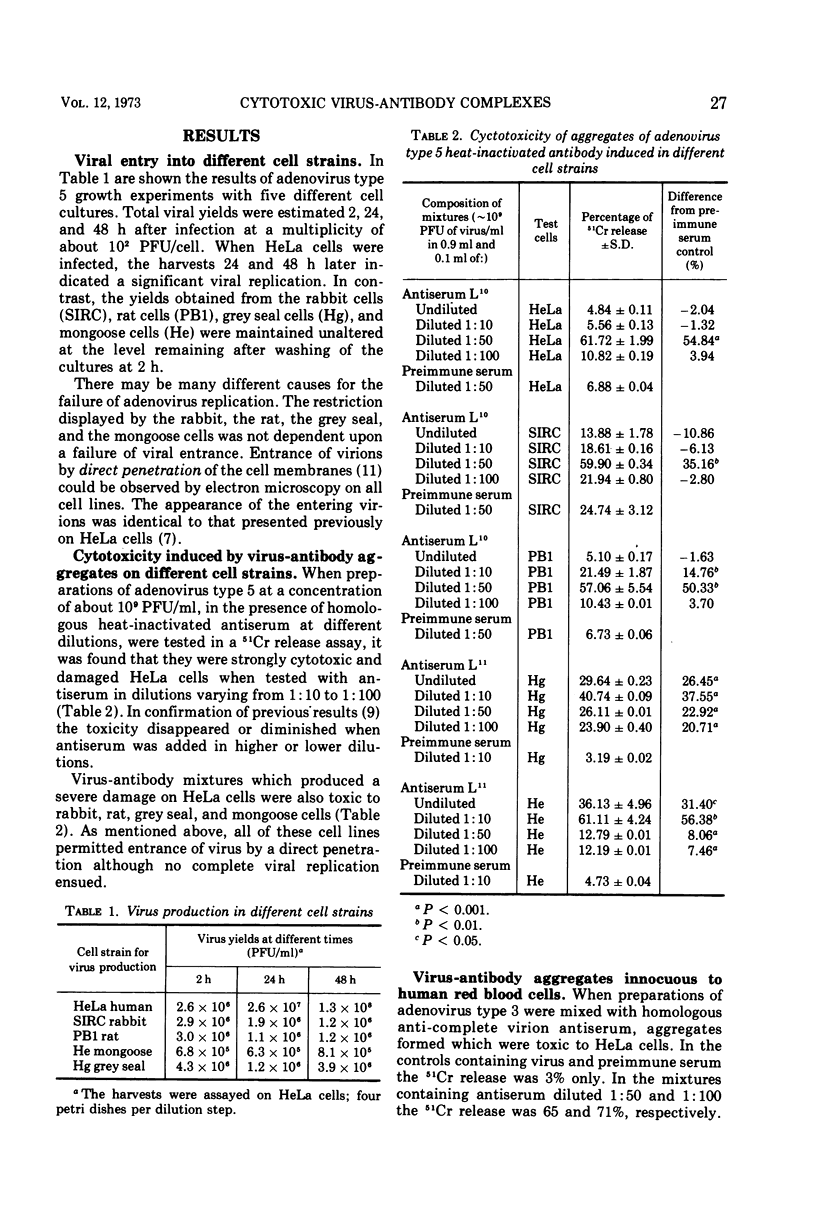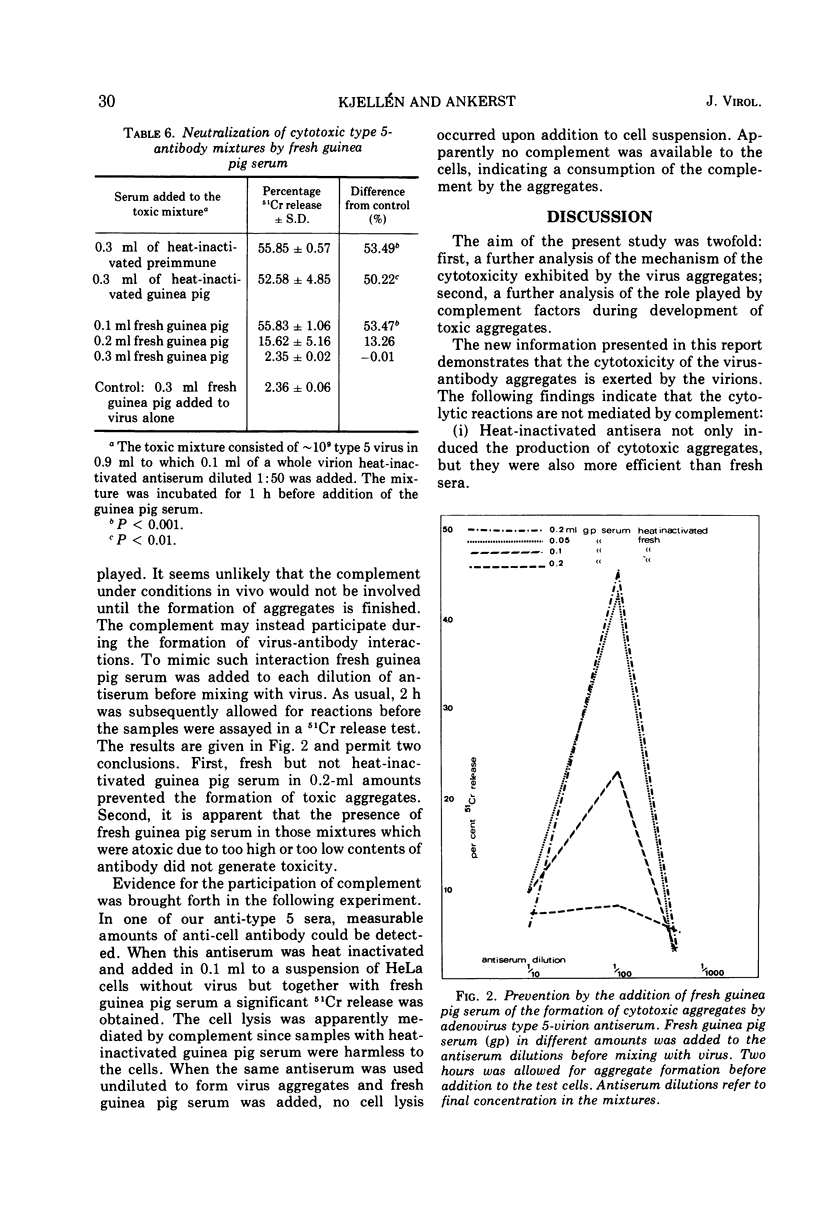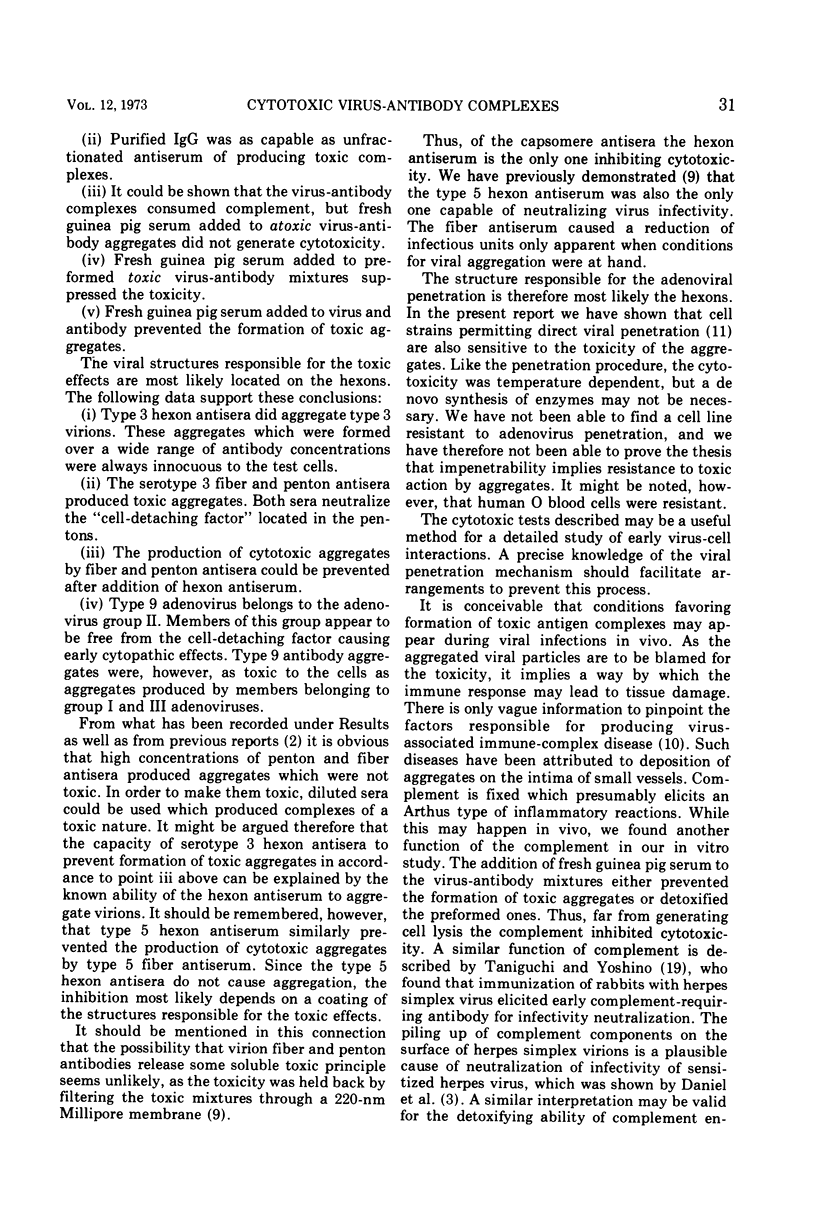Abstract
Adenovirus-antibody aggregates under defined conditions are cytotoxic in vitro. All members of adenovirus groups I, II, and III caused toxicity upon aggregation. The toxicity of the clusters is exerted by the virions. Toxicity is temperature dependent and may be caused by a mechanism similar to that used in viral penetration. Cells permitting direct viral penetration were all sensitive to the toxic aggregates. The toxicity seems to be related to hexon antigens on the surface of the virions since antihexon sera neutralized the toxicity. No evidence was obtained showing that pentons are required for this kind of cytotoxicity. Adenovirus types 3, 5, and 9 were used in the experiment. Cytotoxicity was estimated by the 51Cr release assay. Complement factors could be excluded as mediators of the cytolytic reactions. Instead, complement was shown to prevent the formation of toxic aggregates or to neutralize the toxicity of preformed ones.
Full text
PDF







Selected References
These references are in PubMed. This may not be the complete list of references from this article.
- Ankerst J., Sjögren H. O. Cross-reacting TSTAs in adeno 7 and 12 tumors demonstrated by 51Cr-cytotoxicity and isograft rejection tests. Int J Cancer. 1969 May 15;4(3):279–287. doi: 10.1002/ijc.2910040305. [DOI] [PubMed] [Google Scholar]
- Daniels C. A., Borsos T., Rapp H. J., Snyderman R., Notkins A. L. Neutralization of sensitized virus by purified components of complement. Proc Natl Acad Sci U S A. 1970 Mar;65(3):528–535. doi: 10.1073/pnas.65.3.528. [DOI] [PMC free article] [PubMed] [Google Scholar]
- GESSLER A. E., BENDER C. E., PARKINSON M. C. A new and rapid method for isolating viruses by selective fluorocarbon deproteinization. Trans N Y Acad Sci. 1956 Jun;18(8):701–703. doi: 10.1111/j.2164-0947.1956.tb00497.x. [DOI] [PubMed] [Google Scholar]
- Gelderblom H., Bauer H., Frank H., Wigand R. The structure of group II adenoviruses. J Gen Virol. 1967 Oct;1(4):553–560. doi: 10.1099/0022-1317-1-4-553. [DOI] [PubMed] [Google Scholar]
- Hansson U. B., Laurell C. B., Bachmann R. Sedimentation constants of IgG and IgD myeloma proteins compared with those of normal IgG. Acta Med Scand Suppl. 1966;445:89–92. doi: 10.1111/j.0954-6820.1966.tb02344.x. [DOI] [PubMed] [Google Scholar]
- Kjellen L. Cytotoxic virus-antibody complexes. J Infect Dis. 1972 Dec;126(6):682–683. doi: 10.1093/infdis/126.6.682. [DOI] [PubMed] [Google Scholar]
- Kjellén L., Ankerst J. Cytotoxicity of adenovirus-antibody complexes. Specificity of antibody and virus-antibody ratio at which cytotoxicity is induced. Eur J Immunol. 1973 Feb;3(2):78–84. doi: 10.1002/eji.1830030205. [DOI] [PubMed] [Google Scholar]
- Kjellén L. Cytotoxicity by antigen aggregation. Adenovirus neutralization assays as a model. Arch Gesamte Virusforsch. 1972;39(1):1–12. doi: 10.1007/BF01241524. [DOI] [PubMed] [Google Scholar]
- Morgan C., Rosenkranz H. S., Mednis B. Structure and development of viruses as observed in the electron microscope. V. Entry and uncoating of adenovirus. J Virol. 1969 Nov;4(5):777–796. doi: 10.1128/jvi.4.5.777-796.1969. [DOI] [PMC free article] [PubMed] [Google Scholar]
- Norrby E., Marusyk H., Hammarskjöld M. L. The relationship between the soluble antigens and the virion of adenovirus type 3. V. Identification of antigen specificities available at the surface of virions. Virology. 1969 Jul;38(3):477–482. doi: 10.1016/0042-6822(69)90161-5. [DOI] [PubMed] [Google Scholar]
- Pettersson U., Philipson L., Höglund S. Structural proteins of adenoviruses. II. Purification and characterization of the adenovirus type 2 fiber antigen. Virology. 1968 Jun;35(2):204–215. doi: 10.1016/0042-6822(68)90261-4. [DOI] [PubMed] [Google Scholar]
- Philipson L. Attachment and eclipse of adenovirus. J Virol. 1967 Oct;1(5):868–875. doi: 10.1128/jvi.1.5.868-875.1967. [DOI] [PMC free article] [PubMed] [Google Scholar]
- ROSEN L. A hemagglutination-inhibition technique for typing adenoviruses. Am J Hyg. 1960 Jan;71:120–128. doi: 10.1093/oxfordjournals.aje.a120085. [DOI] [PubMed] [Google Scholar]
- Wadell G., Norrby E. Immunological and other biological characteristics of pentons of human adenoviruses. J Virol. 1969 Nov;4(5):671–680. doi: 10.1128/jvi.4.5.671-680.1969. [DOI] [PMC free article] [PubMed] [Google Scholar]
- Wadell G. Sensitization and neutralization of adenovirus by specific sera against capsid subunits. J Immunol. 1972 Mar;108(3):622–632. [PubMed] [Google Scholar]
- Wallis C., Melnick J. L. Herpesvirus neutralization: the role of complement. J Immunol. 1971 Nov;107(5):1235–1242. [PubMed] [Google Scholar]
- YOSHINO K., TANIGUCHI S. STUDIES ON THE NEUTRALIZATION OF HERPES SIMPLEX VIRUS. I. APPEARANCE OF NEUTRALIZING ANTIBODIES HAVING DIFFERENT GRADES OF COMPLEMENT REQUIREMENT. Virology. 1965 May;26:44–53. doi: 10.1016/0042-6822(65)90024-3. [DOI] [PubMed] [Google Scholar]


